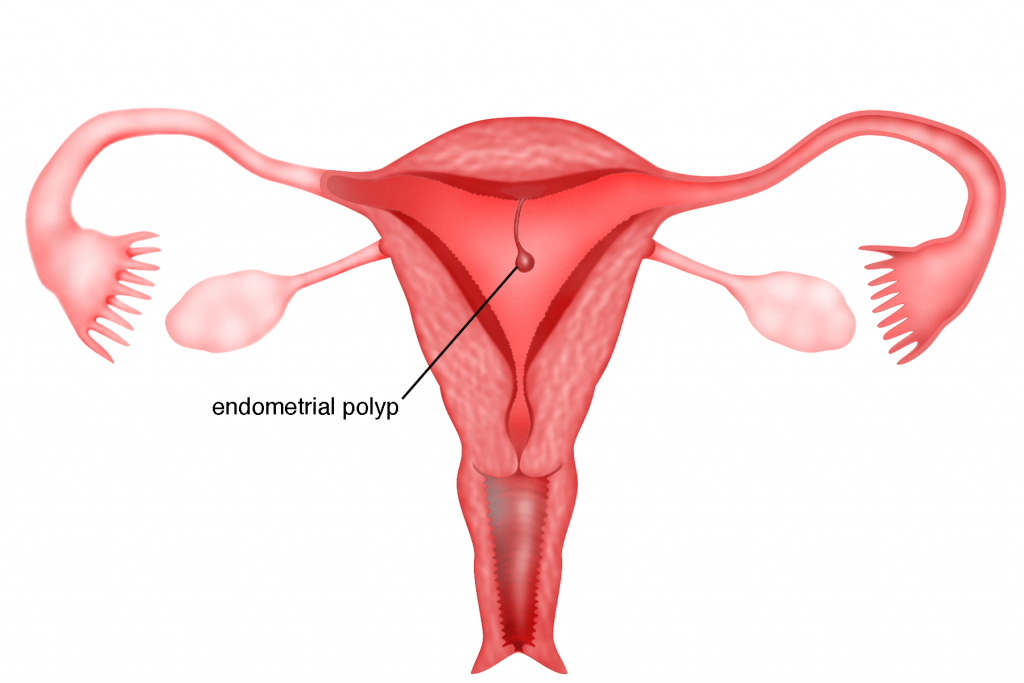Endometrial polyp removal
An endometrial polyp, also known as a uterine polyp, is an overgrowth of the endometrial lining on the interior of the uterus cavity that is most common in women between the ages of 20 and 40. The prevalence of these polyps increases consistently with age, peaking in the fifth decade and gradually reducing following menopause.
Uterine polyps can take on a variety of shapes and sizes, although they often appear as small lumps or mushroom-like caps. These growths, known as uterine polyps, are found inside a female’s uterus cavity and range in size from a few millimeters to a few centimeters.

Symptoms of uterine polyps:
Many women with uterine polyps exhibit no symptoms at all. Others may exhibit one or more of the following symptoms:
Irregular menstrual flow, such as bleeding at frequent and unpredictable intervals
Bleeding in between menstrual cycles
Menstrual cycles that are abnormally heavy
Abnormal vaginal discharge
Vaginal bleeding after menopause
Diagnosis of endometrial polyps
Hysteroscopy may be required to diagnose polyps. An ultrasound scan can also reveal uterine polyps, although it is not always accurate, particularly in younger women who are still having menstrual periods. On an ultrasound scan, a thickened fold of the uterine lining may be interpreted as polyps. A hysteroscopic examination is often required to give an accurate diagnosis. When the polyp is excised and delivered to the laboratory, the final diagnosis of uterine polyp is determined. The laboratory confirms the presence of a polyp and determines the type of polyp.
Other diagnostic procedures, such as hysterosalpingography (a uterine x-ray taken after filling it with a dye) and saline sonography (an ultrasound scan performed after filling the uterine cavity with normal saline), may occasionally reveal uterine polyps. To rule out cancer, a tissue sample from the polyp must be sent for biopsy.
Treatment for endometrial polyps
Watchful Waiting:
Undersized polyps with no symptoms may disappear on their own.
Medication
Some hormonal medicines, such as progestins and gonadotropin-releasing hormone agonists, have been shown to alleviate symptoms. However, taking such medications is usually only a temporary remedy because the symptoms reappear soon once the medication is stopped.
Minimally Invasive Surgery
A hysteroscope, which is a thin, illuminated telescope-like equipment, is used in hysteroscopic endometrial polypectomy. After dilating the cervix, it is introduced through the vagina into the uterus and transmits images of the uterus onto a monitor. To remove each polyp, little instruments are placed through the hysteroscope. The treatment usually takes less than an hour and does not require an overnight stay in the hospital.
It is unlikely that a polyp will form at the same location again. Endometrial polypectomy is a highly efficient treatment for abnormal menstrual bleeding caused by polyps. Fertility rates for women who have had problems conceiving due to polyps have also improved.
Recovery after hysteroscopic endometrial polypectomy
Some women have some blood discharge with their water output for a few weeks; expect the flow to be heavy at first, then reduce over time. Most women feel better within a week of surgery; however, do not lift, push, or pull any heavy objects for a few weeks. To allow for internal healing, full recovery takes roughly two weeks.
Success rate of hysteroscopic endometrial polypectomy
Polypectomy had a positive effect with a 75-100 percent success rate. Polypectomy appears to be effective in infertile females. If you are diagnosed with endometrial polyp contact our experts for world-class treatment.
